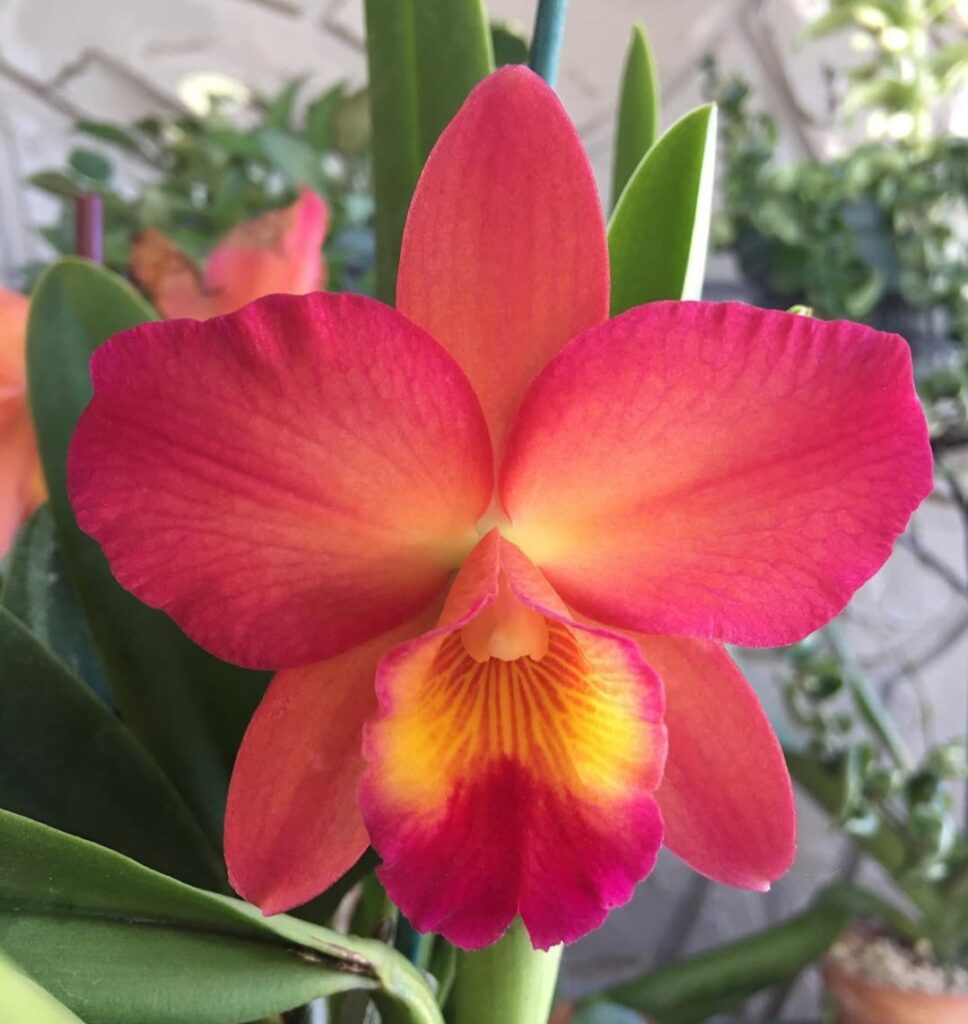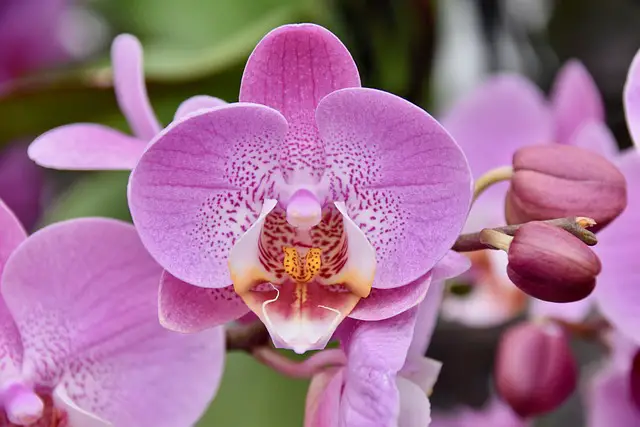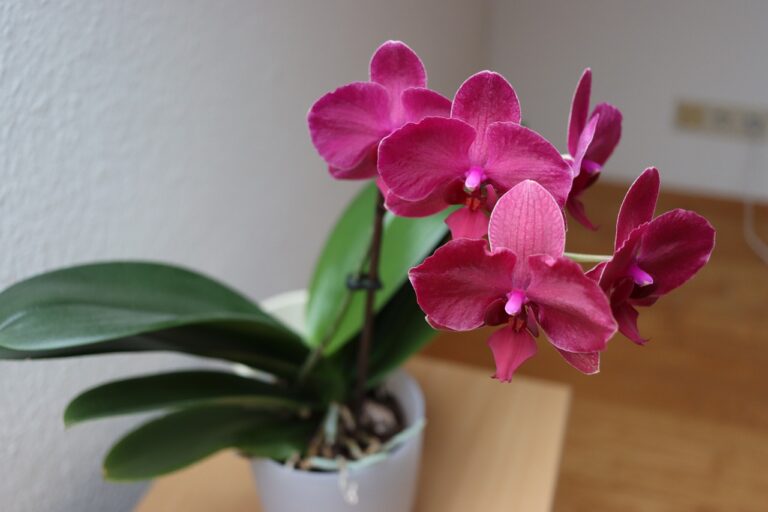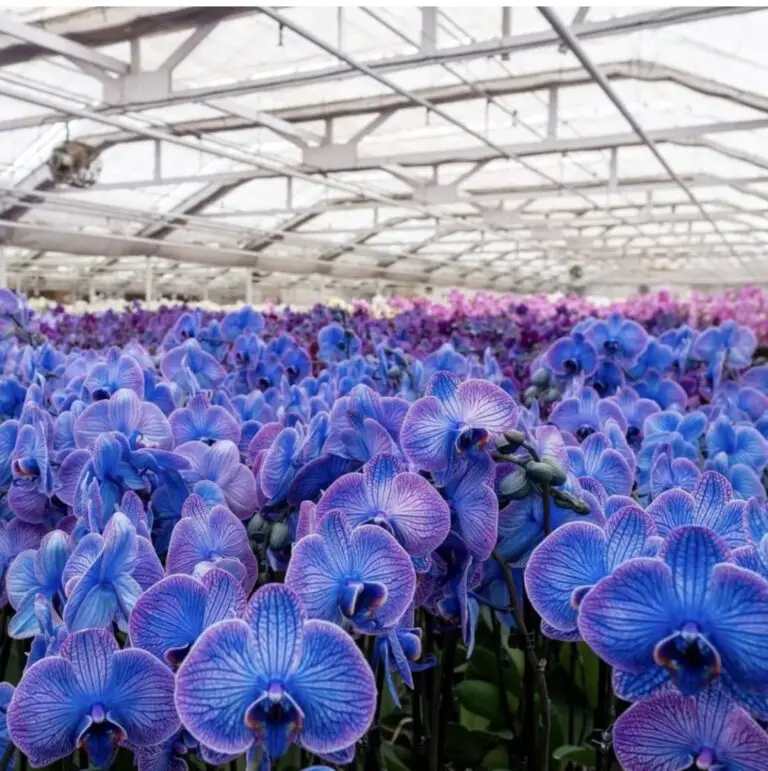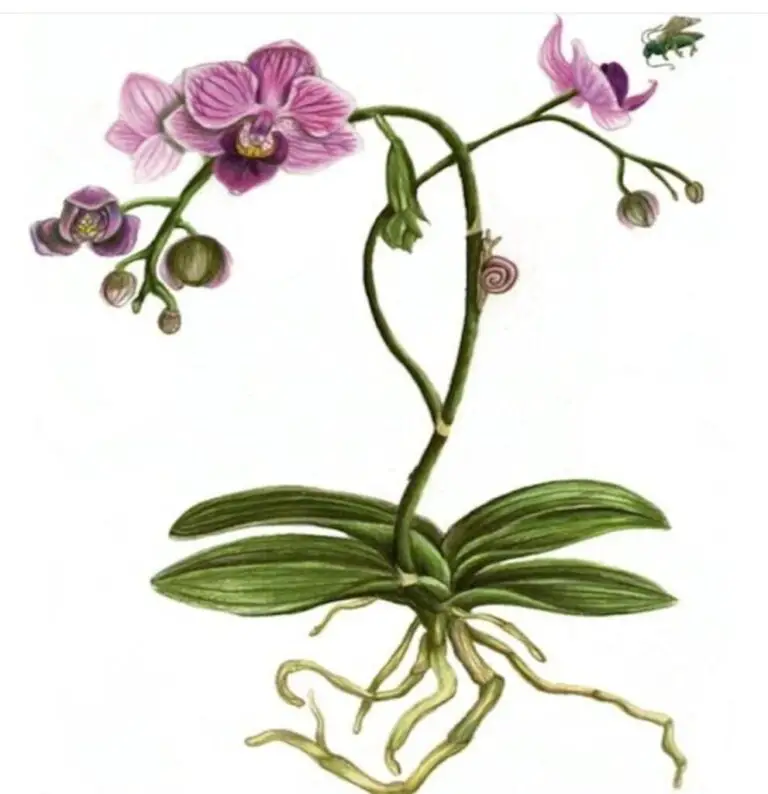The orchid bloom cycle is one of the most fascinating aspects of growing these exotic flowers. Unlike many common houseplants that bloom frequently, orchids follow a unique and sometimes unpredictable pattern. Understanding their bloom cycle can help you appreciate the beauty of these plants while ensuring they receive the right care to thrive.
Many beginner growers become impatient when their orchid refuses to bloom for months—or even years. However, the key to success lies in patience and proper care. Orchids require specific conditions, including the right amount of light, temperature, humidity, and fertilization, to trigger their blooming process. If you’ve ever wondered why your orchid isn’t blooming or how long it takes for flowers to appear, this guide will explain everything you need to know.
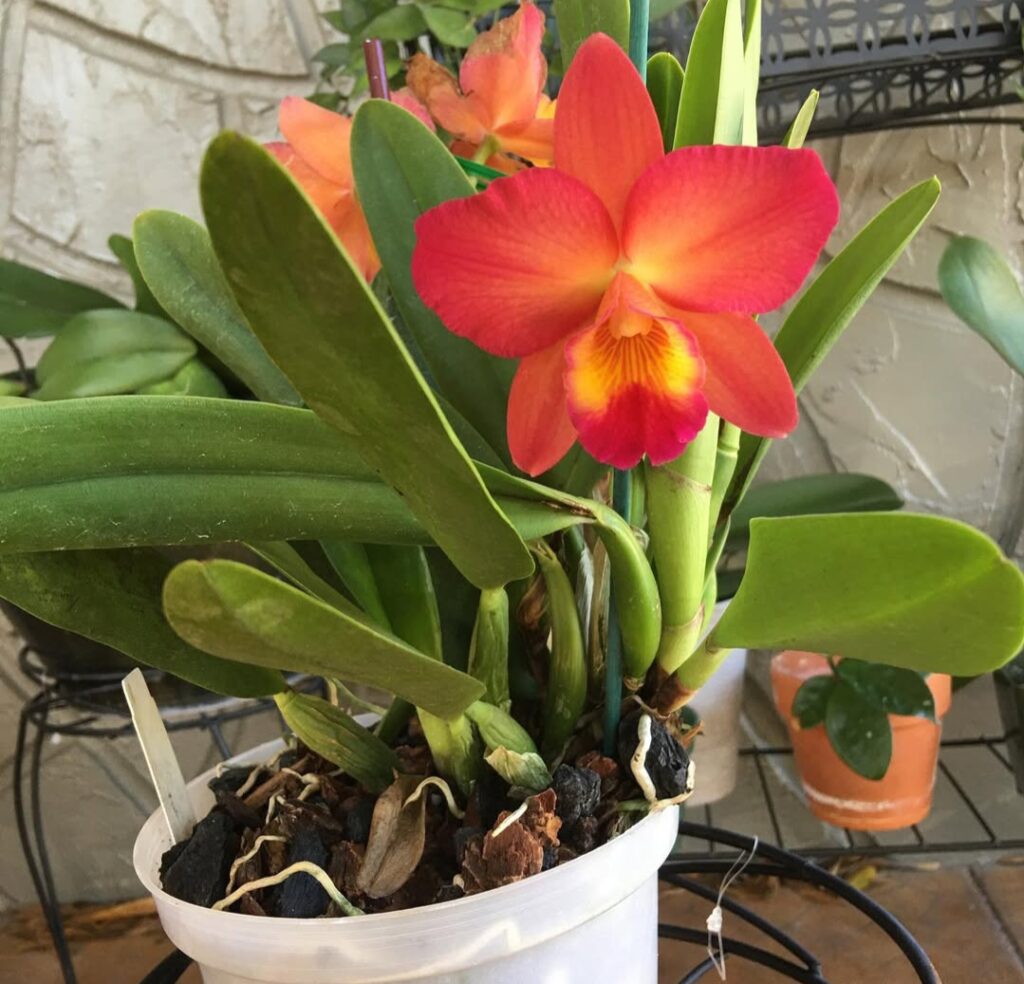
In this article, we’ll break down the orchid bloom cycle step by step, from the growth of new leaves and roots to the exciting moment when flower spikes emerge. You’ll also learn expert tips on encouraging reblooming and avoiding common mistakes that can delay flowering. Whether you’re growing Phalaenopsis, Cattleya, or Dendrobium orchids, understanding their natural cycle will help you cultivate stunning, long-lasting blooms.
Let’s explore why patience is essential when growing orchids and how you can support their journey from dormancy to breathtaking flowers!
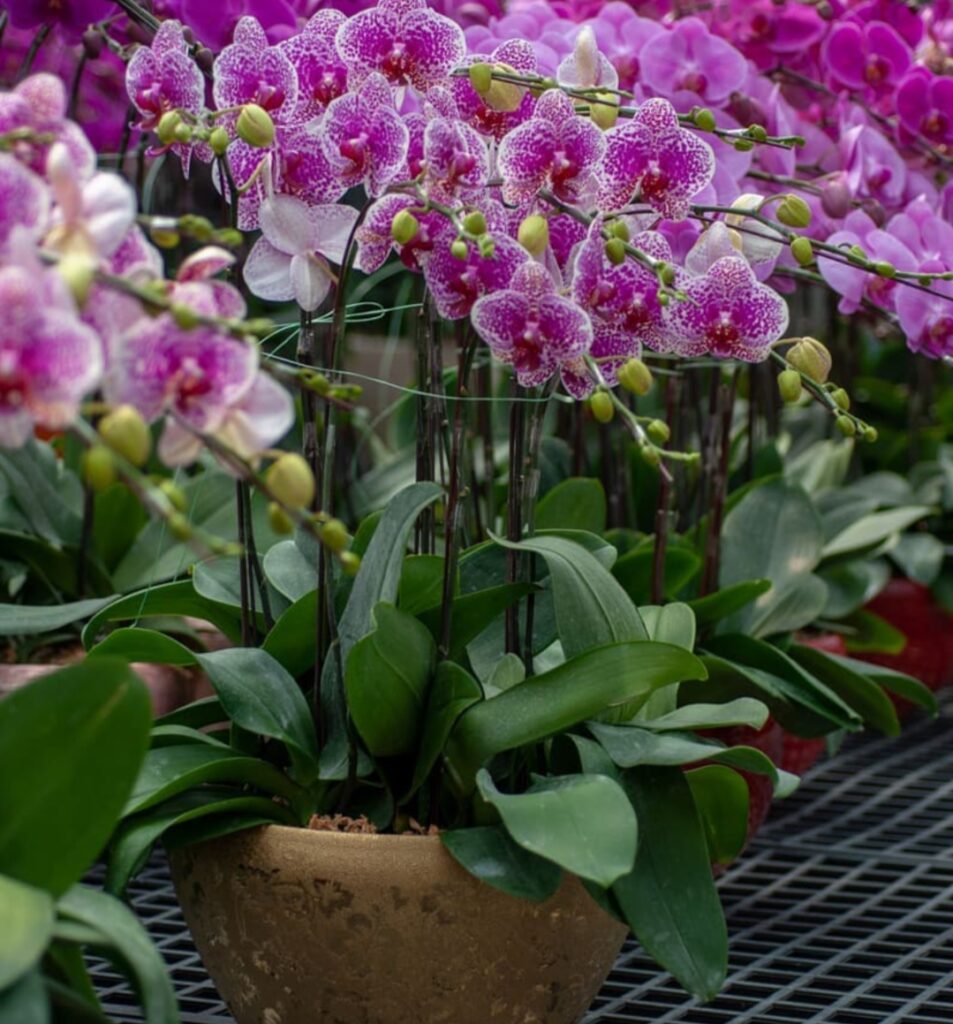
- 1 Understanding the Orchid Bloom Cycle
- 2 Preparing Your Orchid for Blooming Season
- 3 Signs Your Orchid is Ready to Bloom
- 4 The Different Stages of Orchid Blooming
- 5 Essential Care During the Bloom Cycle
- 6 Common Problems During the Blooming Phase
- 7 Post-Bloom Care and Recovery
- 8 Encouraging Multiple Bloom Cycles
- 9 The following are some crucial points to consider:
- 10 Conclusion: Mastering Your Orchid’s Bloom Cycle
- 11 FAQ
Understanding the Orchid Bloom Cycle
Orchids are known for their beauty and unique traits. They come in many types, each with its own Flower Spikes and Growth Patterns. To get them to bloom often, it’s key to know what makes them bloom.
Light, temperature, and humidity are important. These factors help control when and how often orchids bloom. By adjusting these, you can encourage your orchids to bloom more.
Watching how different orchids bloom can help you care for them better. You can see when Flower Spikes appear, which means a bloom is coming. Then, you can change your care to help them grow well.
What Triggers Blooming in Orchids
Many things can make orchids bloom, like changes in temperature, humidity, and light. By mimicking these changes, you can help your orchids bloom. For example, some need cooler temperatures, while others need more humidity.
The Role of Environmental Factors
Environmental factors are key in the orchid bloom cycle. By controlling light, temperature, and humidity, you can help your orchids grow and bloom. This might mean moving them, using grow lights, or using humidifiers.
Natural Blooming Seasons
Orchids bloom at different times, from a few weeks to months. Knowing when your orchid blooms can help you care for it better. You might need to water, fertilize, or prune more to help them bloom.
Preparing Your Orchid for Blooming Season
To help your orchid bloom, you need to change its care routine. This means adjusting Environmental Factors and Watering Requirements. Too much water can harm your orchid before it blooms.
When getting ready for the blooming season, consider these important points:
Light exposure: Orchids need bright, indirect light to bloom.
Temperature: They prefer daytime temperatures of 65-75°F (18-24°C). At night, it should be 5-10°F (3-6°C) lower.
Humidity: Orchids love humid places, with humidity levels between 40-70%.
By tweaking these Environmental Factors and Watering Requirements, you can encourage your orchid to grow a flower spike. This boosts the chances of a successful bloom.
Keep in mind, every orchid is different. It’s crucial to watch and respond to your plant’s unique needs for the best results.
Signs Your Orchid is Ready to Bloom
Orchid lovers wait eagerly for their plants to bloom. Knowing when your orchid is ready is key. Look for a flower spike to see if it’s time.
Changing Light and Temperature Needs helps during this important time. A good Fertilization Schedule also boosts growth and blooms.
Watch for growth changes and pre-bloom signs to get ready.
Changes in leaf color or texture
The emergence of a flower spike
Increased watering needs
Keep an eye on these signs and adjust your care. This will help your orchid bloom beautifully.
Every orchid is different, and blooming signs can vary. But, by paying attention to your plant, you can ensure it blooms well.
The Different Stages of Orchid Blooming
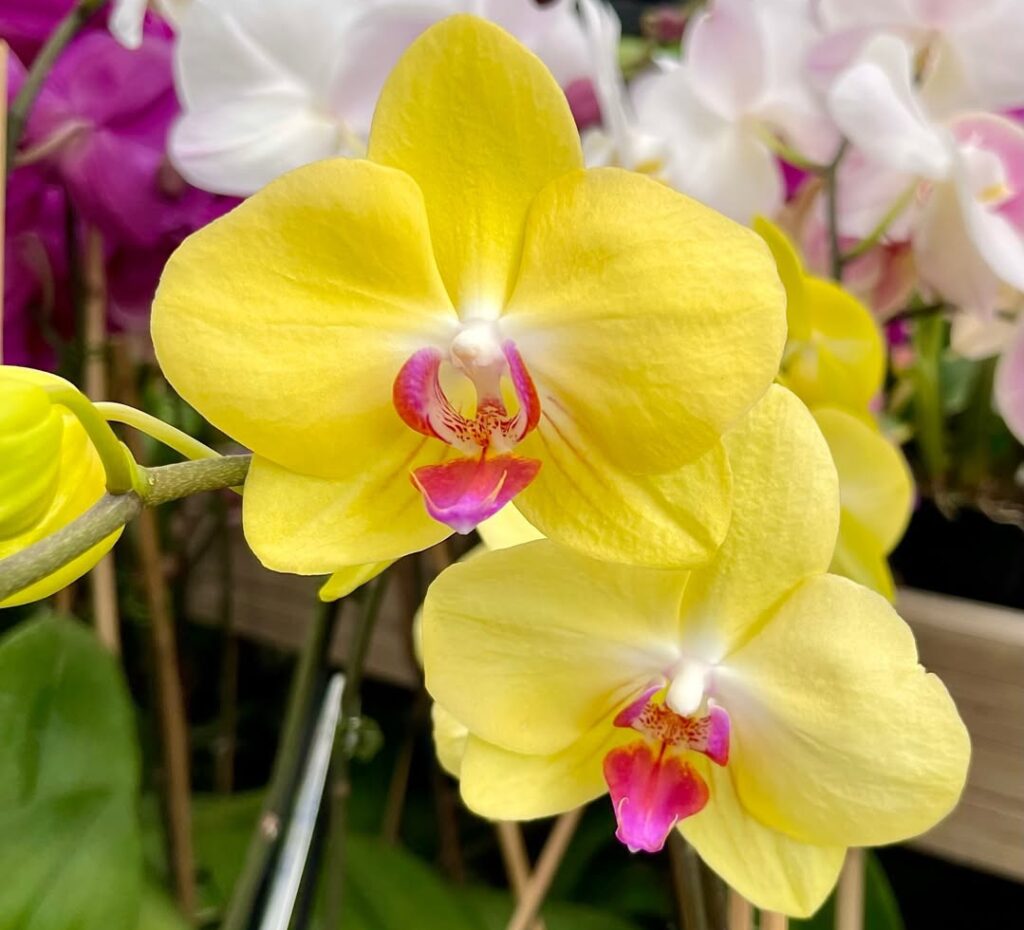
Orchid blooming is a complex process with several stages. Each stage needs specific care and attention. To ensure a healthy bloom, understanding these stages is key. Proper Humidity Management plays a big role in the bloom’s longevity and quality.
Effective Orchid Care during blooming involves optimal conditions. This includes temperature, light, and watering. A tailored care routine helps orchid lovers enjoy the bloom’s beauty. Important considerations include:
Maintaining a humid environment for healthy growth
Providing enough light for blooming
Watering carefully to avoid over-saturation
Understanding orchid blooming stages and providing the right care leads to a thriving bloom. Proper Humidity Management and Orchid Care are essential for this.
With the right care, orchids can bloom for months, showing off stunning colors. Following the guidelines and providing proper Humidity Management and Orchid Care lets enthusiasts fully enjoy their orchid’s bloom.
Essential Care During the Bloom Cycle
Orchid care during the bloom cycle is key for a healthy bloom. Each Orchid Type has its own needs. Knowing these is crucial for a successful bloom. As Blooming Seasons come, adjusting care routines is vital for growth.
For a vibrant bloom, the right conditions are needed. This includes the right watering requirements. Too much water can cause root rot, while too little can wilt the bloom. A good fertilization schedule also supports growth, leading to healthy blooms.

Key Care Requirements
Watering: Adjust watering schedules according to the orchid type and stage of bloom
Light and Temperature: Provide the right light and temperature conditions for the orchid type
Fertilization: Follow a well-planned fertilization schedule to support plant growth
Humidity Management: Maintain optimal humidity levels to prevent stress and promote healthy growth
By following these essential care requirements, you can enjoy a thriving bloom. It’s important to research the specific needs of your Orchid Types. Adjust your care routine accordingly, considering the unique traits of each Blooming Seasons.
| Orchid Type | Blooming Season | Care Requirements |
|---|---|---|
| Phalaenopsis | Spring | High humidity, moderate watering |
| Dendrobium | Summer | Low humidity, infrequent watering |
Common Problems During the Blooming Phase
Even with the right Orchid Care, problems can still happen during the blooming phase. It’s important to know these issues to fix them and ensure a great bloom. One big problem is bud drop, where buds fall off before they open. This is really disappointing for orchid lovers.
Another issue is when the blooms are weak or not the right color. Environmental Factors can greatly affect this. Knowing how they impact your orchids is key to solving these problems. Some common issues during the blooming phase include:
Bud drop: caused by sudden changes in temperature, humidity, or light
Bloom quality concerns: resulting from inadequate light, water, or nutrients
Environmental stress symptoms: such as leaf drop or yellowing, which can indicate a need for adjustments in Orchid Care
By knowing these potential problems and acting early, orchid fans can reduce their effects. Keeping an eye on Environmental Factors and adjusting Orchid Care as needed can help avoid these issues. This way, you can enjoy a healthy, beautiful bloom.
Post-Bloom Care and Recovery
After the bloom fades, it’s key to give the right care for the orchid’s recovery. This means adjusting how often you water and feed it. Also, you should trim the flower spike. Knowing how to care for the plant during this time can help it bloom again.
To help your orchid recover well, follow these steps:
Reduce watering to let the plant rest and rechargeStop fertilizing for a bit to avoid harming the roots
Prune the flower spike to help it bloom again
By focusing on post-bloom care, you can make your orchid bloom more often. A well-cared-for orchid can bloom many times. This makes it a lovely and rewarding addition to any home or garden.
With the right care, your orchid can bloom again, bringing joy and beauty to your life. By following these simple steps and understanding Orchid Recovery and the Bloom Cycle, you can become an expert orchid grower. Enjoy the many rewards of these stunning plants.
Encouraging Multiple Bloom Cycles
To get your orchid to bloom more, you need to know about the Orchid Bloom Cycle and how to care for it. Pruning is key to making it produce new flowers. Also, keeping the right light, temperature, and humidity is crucial for more blooms.
The following are some crucial points to consider:
Strategic pruning techniques to stimulate new flower spikes
Maintaining optimal growing conditions, including light, temperature, and humidity
Timing your care routine to coincide with the natural Orchid Bloom Cycle
Learning these tips and giving your orchid the right care will make it bloom all year. Keep an eye on how your orchid reacts to different care and adjust as needed for the best blooms.
With the right pruning, growing conditions, and care timing, your orchid can bloom many times. This makes it a beautiful and rewarding part of your home or garden.
| Factor | Importance | Tips |
|---|---|---|
| Pruning | High | Prune after blooming to stimulate new growth |
| Lighting | Medium | Provide bright, indirect light for optimal growth |
| Humidity | Medium | Maintain a humid environment, around 40-70% |
Conclusion: Mastering Your Orchid’s Bloom Cycle
Learning about the Orchid Bloom Cycle takes patience and the right care. This guide helps you get ready for blooms and encourages more cycles. You’ll see your orchids thrive and bloom beautifully.
Every orchid is different, so what works for one might not work for another. Keep learning and adjusting to care for your orchids well. With effort, you’ll see your orchids bloom stunningly every time.
Keep growing your orchids and enjoy the journey. Celebrate every success and the beauty of nature’s art. Mastering the bloom cycle opens a world of wonder and joy in caring for these magical plants.
FAQ
What triggers blooming in orchids?
Light, temperature, and humidity are key factors that trigger orchid blooms. Knowing these triggers helps ensure your orchid blooms healthily and often.
How can I prepare my orchid for the blooming season?
To get your orchid ready for blooms, adjust its care. This means changing how you water it and manage its environment. Also, follow a special fertilization plan.
How can I tell if my orchid is prepared to bloom?
Look for a flower spike and changes in growth. These signs mean your orchid is getting ready to bloom. Providing the right care at this time is important.
What are the different stages of the orchid blooming process?
The blooming process has several stages, each with its own needs. Knowing these stages helps you keep your orchid in the best condition for blooming.
What are the essential care requirements during the bloom cycle?
During blooms, you need to water carefully, adjust light and temperature, and fertilize on schedule. Keeping humidity right is also key. Tailor these steps to your orchid’s type and bloom stage.
What are some common problems that can occur during the blooming phase?
Problems like bud drop and poor blooms can happen. So can stress from the environment. Knowing the causes and how to fix them helps your orchid bloom well.
How can I encourage multiple bloom cycles in my orchid?
For more blooms, use smart pruning and keep growing conditions perfect. Time your care to match your orchid’s natural cycle. This way, you can enjoy blooms all year.
What is the Orchid Bloom Cycle?
The Orchid Bloom Cycle refers to the natural process orchids go through from budding to flowering and then resting before blooming again.
How long does the Orchid Bloom Cycle last?
The Orchid Bloom Cycle varies by species but typically lasts from a few weeks to several months, with some orchids blooming once or multiple times a year.
How can I encourage my orchid to restart its Orchid Bloom Cycle?
To restart the Orchid Bloom Cycle, provide proper lighting, adjust temperature drops at night, and ensure balanced fertilization.
What are the key stages in the Orchid Bloom Cycle?
The Orchid Bloom Cycle consists of four main stages: growth (vegetative phase), budding, flowering, and dormancy (resting phase).
Why is my orchid stuck in the dormancy phase of the Orchid Bloom Cycle?
If your orchid is stuck in the dormancy phase of the Orchid Bloom Cycle, it may need more light, a temperature drop at night, or better nutrition to trigger blooming.
How does temperature affect the Orchid Bloom Cycle?
Temperature fluctuations, especially cooler night temperatures, help regulate the Orchid Bloom Cycle by signaling the plant to start bud formation.
Can repotting disrupt the Orchid Bloom Cycle?
Yes, repotting can temporarily interrupt the Orchid Bloom Cycle, especially if done during the flowering stage, as orchids may drop buds or flowers due to stress.
Does fertilization impact the Orchid Bloom Cycle?
Yes, proper fertilization with a bloom-boosting formula high in phosphorus can enhance the Orchid Bloom Cycle, leading to healthier and more frequent blooms.
